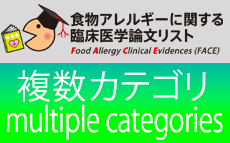Spice allergy
更新日:2016年10月21日
| Author: | James L. Chen, DO, and Sami L. Bahna, MD, DrPH |
|---|---|
| Title: | Spice allergy |
| Citation: | Annals of Allergy, Asthma & Immunology |
| URL: | https://pubmed.ncbi.nlm.nih.gov/21875536/ |
| Abstract: | Objectives: To provide a review on spice allergy and its implementation in clinical practice. Data Sources: PubMed searches were performed using spice allergy as the keyword for original and review articles. Selected references were also procured from the reviewed articles’ references list. Study Selection: Articles were selected based on their relevance to the topic. Results: Spices are available in a large variety and are widely used, often as blends. Spice allergy seems to be rare, reportedly affecting between 4 and 13 of 10,000 adults and occurring more often in women because of cosmetic use. No figures were available on children. Most spice allergens are degraded by digestion; therefore, IgE sensitization is mostly through inhalation of cross-reacting pollens, particularly mugwort and birch. The symptoms are more likely to be respiratory when exposure is by inhalation and cutaneous if by contact. Studies on skin testing and specific IgE assays are limited and showed low reliability. The diagnosis primarily depends on a good history taking and confirmation with oral challenge. The common use of spice blends makes identifying the particular offending component difficult, particularly because their components are inconsistent. Conclusion: Spices are widely used and contain multiple allergens, yet spice allergy is probably markedly underdiagnosed. There is a need for reliable skin testing extracts and serum specific IgE assays. Currently, the diagnosis depends on a good history taking and well-designed titrated challenge testing. Until immunotherapy becomes developed, treatment is strict avoidance, which may be difficult because of incomplete or vague labeling. |
| 邦文タイトル: | 準備中 |
| 一般向け要約 | 準備中 |
| 専門医コメント | 準備中 |

